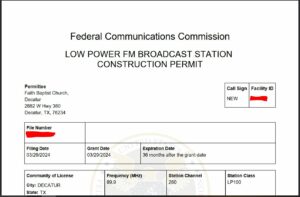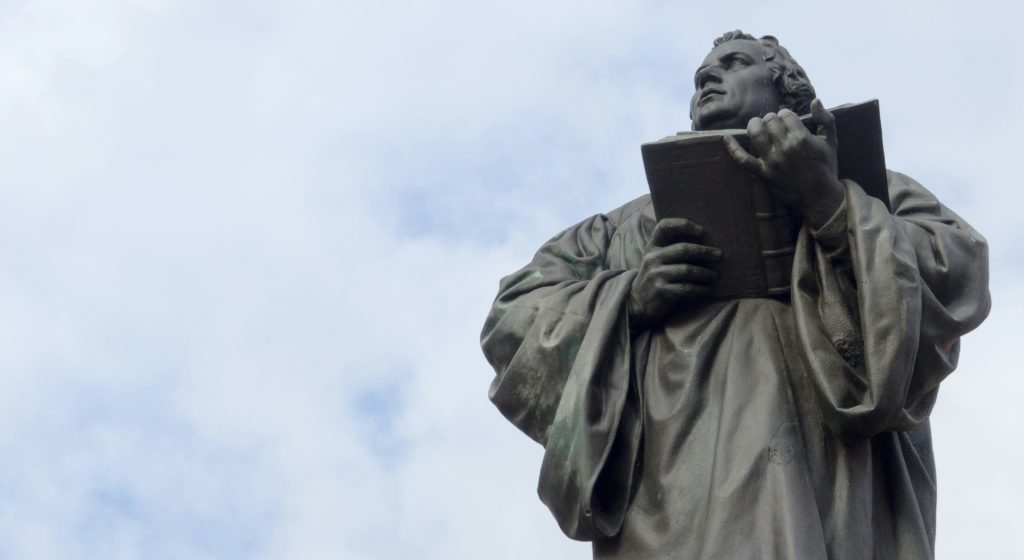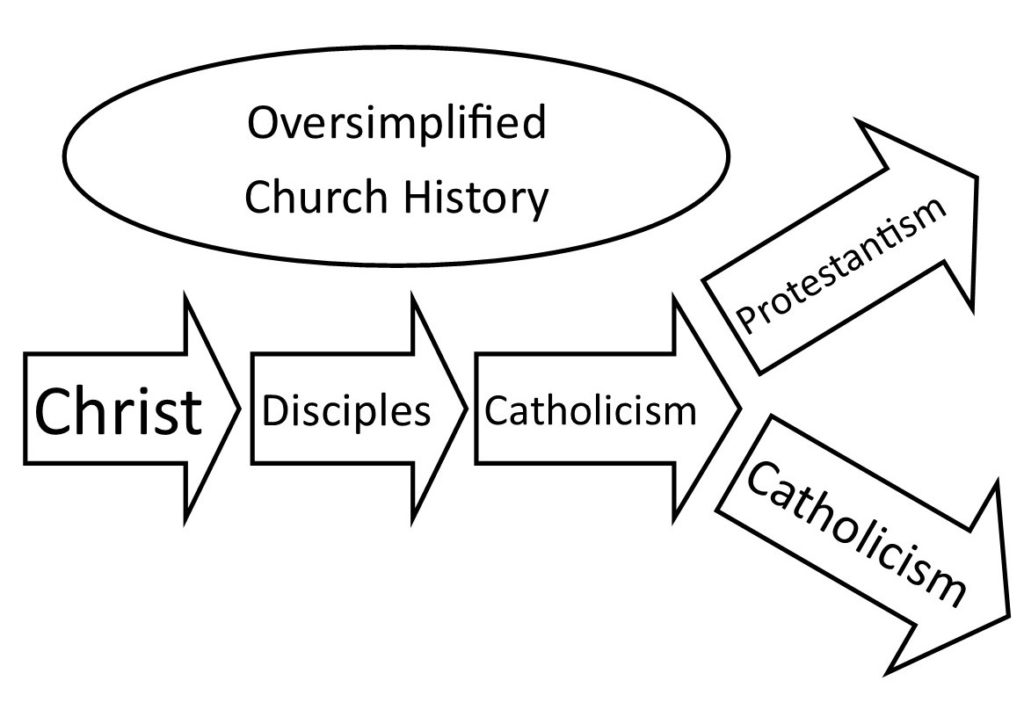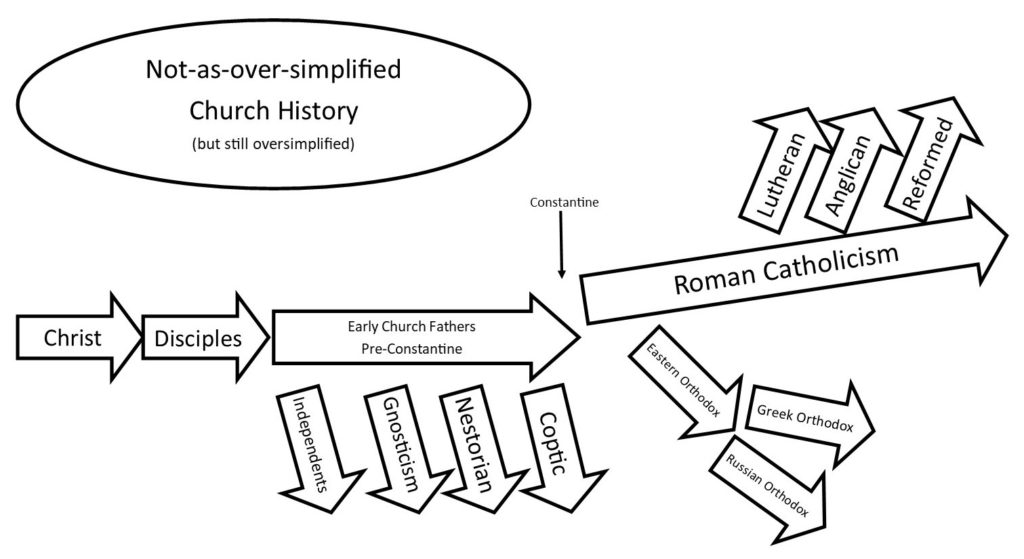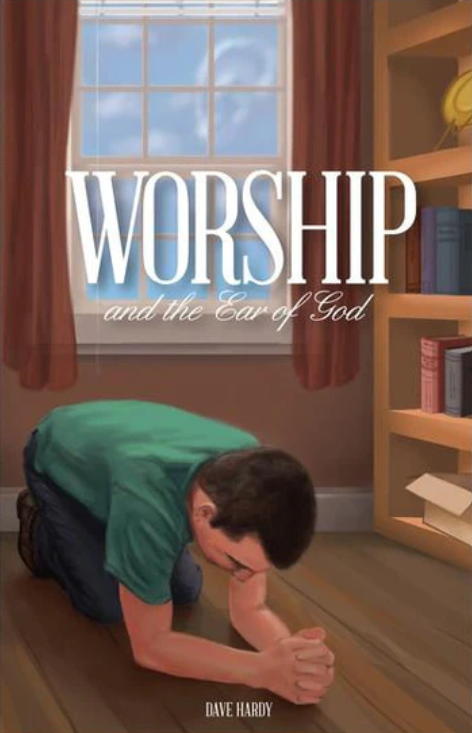There has been great debate throughout the history of Christianity on how to properly and acceptably express worship through physical expression. The debate is usually presented as a false dichotomy: you are either for physical expression in worship or you are not. Actually, there is a vast spectrum of opinions on the matter.
If we were to be honest, how we express our worship to God has much to do with our culture. Some cultures are far more physically expressive than others and it tends to bleed into how they worship. This is evident here in America, where many have observed that church services in the south are typically livelier than those in the north. A church service in Central America may be even livelier, while one in Europe may not be lively at all. Each of these situations is caused by the culture of the people.
Culture is something that must be considered when discussing this topic. Our modern American culture has some overlap with that of ancient Israel but there are also great differences. For instance, we do not express lament or mourning by tearing our clothes, wearing sackcloth, and putting ashes on our heads (II Samuel 13:19, Esther 4:1, Daniel 9:3, Jonah 3:6, etc.). Yet we know what these actions represent in that culture.
The bottom line is that physical expression is worship is an area of Christian liberty. There are many verses that condone it and few that condemn it. As Paul said in Romans 14:5: “Let every man be fully persuaded in his own mind.”
The issue today is that there is a great push for physical expression in worship that is not based on sound interpretation of Scripture. In this chapter, I want to look at four commonly promoted physical expressions and examine the Biblical case for each.
Bowing/Kneeling/Prostration
The primary Hebrew and Greek words used for worship carry with them the idea of bowing or prostration. The Hebrew shachah (Strong’s H7812) is defined as:
“A primitive root; to depress, that is, prostrate (especially reflexively in homage to royalty or God): – bow (self) down, crouch, fall down (flat), humbly beseech, do (make) obeisance, do reverence, make to stoop, worship.”
The Greek proskeneo (Strong’s G4352) is defined as:
“to fawn or crouch to, that is, (literally or figuratively) prostrate oneself in homage (do reverence to, adore): – worship.”
So obviously there is a connection between worshipping and humbling oneself by lowering ourselves toward the ground. I do not think anyone would deny that.
The issue then is whether that physical expression is figurative or literal for us today. Can this be done?
We must consider that in Hebrew especially there is a tendency to express abstract concepts with concrete imagery. That is, things that cannot be interacted with via our human senses are explained with things that are. A great example of this is the word qavah (Strong’s H6960) which is translated as “wait” in Isaiah 40:31. The Strong’s definition for this word is:
“to bind together (perhaps by twisting), that is, collect; (figuratively) to expect: – gather (together), look, patiently, tarry, wait (for, on, upon).”
Thus, the abstract idea of waiting is expressed in the concrete imagery of twisting and binding, such as braiding a rope from individual fibers. We see this meaning in Genesis 1:9 and Jeremiah 1:17 where qavah is translated “gathered”.
Does “waiting” (qavah) on the Lord mean that I must be twisting and binding? I do not think anyone would take those implied actions as literal. Instead, we would enhance our understanding of “waiting” to include preparing, strengthening, or producing so that waiting does not mean idleness.
So, does “worshipping” (shachah) mean that I must bow myself to the earth to truly worship? I would contend that it is a similar case to that of qavah, in that the implied action should be applied figuratively. It is therefore important to humble ourselves before God in our spirit, which may or may not be expressed physically.
Let me be honest here. I do not see any sort of command or precedent for physically bowing in our worship today. But of all the physical expressions we will discuss, this is the one that I would have the least problem with because it is the truest to the original sense of the words. Personally, I often lay prostrate on the ground in private prayer. I do think it would be out of place in corporate worship.
Clapping Hands
Clapping hands is a sign of joy or appreciation in our American culture. We may clap when our sports team wins or after a piano recital.
There is a little more nuance to the action when it appears in the Bible. It is chiefly an expression of joy or appreciation. However, it is also used in a mocking or derisive sense. Let’s look at the appearance of clapping and what each represents.
The first group are verses in which clapping hands is a clear expression of joy:
“And he brought forth the king’s son, and put the crown upon him, and gave him the testimony; and they made him king, and anointed him; and they clapped their hands, and said, God save the king.” – II Kings 11:12
“O clap your hands, all ye people; shout unto God with the voice of triumph.” – Psalm 47:1
The second group are verses in which anthropomorphic rivers and trees clap their hands in joy:
“Let the floods clap their hands: let the hills be joyful together” – Psalm 98:8
“For ye shall go out with joy, and be led forth with peace: the mountains and the hills shall break forth before you into singing, and all the trees of the field shall clap their hands.” – Isaiah 55:12
The third group are verses in which clapping hands is derisive or mocking, like gloating over a defeated enemy:
“Men shall clap their hands at him [wicked man], and shall hiss him out of his place.” – Job 27:23
“For he [Job] addeth rebellion unto his sin, he clappeth his hands among us, and multiplieth his words against God.” – Job 34:37
“All that pass by clap their hands at thee; they hiss and wag their head at the daughter of Jerusalem, saying, Is this the city that men call The perfection of beauty, The joy of the whole earth?” – Lamentations 2:15
“For thus saith the Lord GOD; Because thou [Ammon] hast clapped thine hands, and stamped with the feet, and rejoiced in heart with all thy despite against the land of Israel; Behold, therefore I will stretch out mine hand upon thee, and will deliver thee for a spoil to the heathen; and I will cut thee off from the people, and I will cause thee to perish out of the countries: I will destroy thee; and thou shalt know that I am the LORD.” – Ezekiel 25:6-7
“There is no healing of thy [Assyria’s] bruise; thy wound is grievous: all that hear the bruit of thee shall clap the hands over thee: for upon whom hath not thy wickedness passed continually?” – Nahum 3:19
Those nine references are all the references to clapping in the Bible. None of the five references in the third group are instructive for us as they do not relate to worship. Neither does II Kings 11:12. I would say that both Psalm 98:8 and Isaiah 55:2 are artistic representations of joy and not instructive to us.
This leaves us with one verse – Psalm 47:1 – to build a case for clapping our hands in worship of God. Here I believe we see the joyful praise of the Messiah in His Kingdom (see vs. 7-9) expressed through clapping (applause), shouting (vs. 1), and singing (vs. 6-7). Charles Spurgeon wrote: “The most natural and most enthusiastic tokens of exultation are to be used in view of the victories of the Lord, and his universal reign. Our joy in God may be demonstrative, and yet he will not censure it.”
I do believe that clapping is an acceptable means of expressing our joy toward God. I do think this refers to applause and not keeping rhythm to a song.
Raising Hands
Over the past few decades, the act of raising hands has become an almost ubiquitous expression of worship. Even in conservative churches there is often a grudging acceptance of the act even if it is not actually promoted or practiced.
I believe there is a great misunderstanding on the subject that is based on people reading a different definition or motivation into the appearance of raising hands in the Bible. To try to avoid confusion, we will look at the references to the practice grouped according to what the act of raising hands is referring to. I do acknowledge that some of these could fit into different or even multiple categories.
First, there is a group of references where raising hands is part of pronouncing a blessing:
“And Aaron lifted up his hand toward the people, and blessed them, and came down from offering of the sin offering, and the burnt offering, and peace offerings.” – Leviticus 9:22
“And he [Christ] led them out as far as to Bethany, and he lifted up his hands, and blessed them.” – Luke 24:50
Second, there is a group of references where raising hands is part of swearing an oath:
“For I [God] lift up my hand to heaven, and say, I live for ever.” – Deuteronomy 32:40
“And Ezra blessed the LORD, the great God. And all the people answered, Amen, Amen, with lifting up their hands: and they bowed their heads, and worshipped the LORD with their faces to the ground.” – Nehemiah 8:6
“And I heard the man clothed in linen, which was upon the waters of the river, when he held up his right hand and his left hand unto heaven, and sware by him that liveth for ever that it shall be for a time, times, and an half; and when he shall have accomplished to scatter the power of the holy people, all these things shall be finished.” – Daniel 12:7
Third, there is a group of references where raising hands is an act of violence or opposition:
“And Ahimaaz called, and said unto the king, All is well. And he fell down to the earth upon his face before the king, and said, Blessed be the LORD thy God, which hath delivered up the men that lifted up their hand against my lord the king.” – II Samuel 18:28
“Then the king Ahasuerus said unto Esther the queen and to Mordecai the Jew, Behold, I have given Esther the house of Haman, and him they have hanged upon the gallows, because he laid his hand upon the Jews.” – Esther 8:7
“Thine hand shall be lifted up upon thine adversaries, and all thine enemies shall be cut off.” – Micah 5:9
Fourth, there is a group of references where raising hands is an act of beckoning or welcoming:
“Thus saith the Lord GOD, Behold, I will lift up mine hand to the Gentiles, and set up my standard to the people: and they shall bring thy sons in their arms, and thy daughters shall be carried upon their shoulders.” – Isaiah 49:22
“I have spread out my hands all the day unto a rebellious people, which walketh in a way that was not good, after their own thoughts;” – Isaiah 65:2
Fifth, there is a group of references where raising hands is an act of prayer or pleading:
“And it was so, that when Solomon had made an end of praying all this prayer and supplication unto the LORD, he arose from before the altar of the LORD, from kneeling on his knees with his hands spread up to heaven.” – I Kings 8:54
“And he [Solomon] stood before the altar of the LORD in the presence of all the congregation of Israel, and spread forth his hands:” – II Chronicles 6:12
“And at the evening sacrifice I arose up from my heaviness; and having rent my garment and my mantle, I fell upon my knees, and spread out my hands unto the LORD my God, And said, O my God, I am ashamed and blush to lift up my face to thee, my God: for our iniquities are increased over our head, and our trespass is grown up unto the heavens. ” – Ezra 9:5-6
“Hear the voice of my supplications, when I cry unto thee, when I lift up my hands toward thy holy oracle.” – Psalm 28:2
“If we have forgotten the name of our God, or stretched out our hands to a strange god;” – Psalm 44:20
“Thus will I bless thee while I live: I will lift up my hands in thy name.” – Psalm 63:4
“Princes shall come out of Egypt; Ethiopia shall soon stretch out her hands unto God.” – Psalm 68:31
“Mine eye mourneth by reason of affliction: LORD, I have called daily upon thee, I have stretched out my hands unto thee.” – Psalm 88:9
“Lift up your hands in the sanctuary, and bless the LORD.” – Psalm 134:2
“Let my prayer be set forth before thee as incense; and the lifting up of my hands as the evening sacrifice.” – Psalm 141:2
“I stretch forth my hands unto thee: my soul thirsteth after thee, as a thirsty land. Selah” – Psalm 143:6
“And when ye spread forth your hands, I will hide mine eyes from you: yea, when ye make many prayers, I will not hear: your hands are full of blood.” – Isaiah 1:15
“Zion spreadeth forth her hands, and there is none to comfort her: the LORD hath commanded concerning Jacob, that his adversaries should be round about him: Jerusalem is as a menstruous woman among them.” – Lamentations 1:15
“Let us lift up our heart with our hands unto God in the heavens.” – Lamentations 3:41
“Arise, cry out in the night: in the beginning of the watches pour out thine heart like water before the face of the Lord: lift up thy hands toward him for the life of thy young children, that faint for hunger in the top of every street.” – Lamentations 2:19
“I will therefore that men pray every where, lifting up holy hands, without wrath and doubting.” – I Timothy 2:8
Sixth, there is a group of references where raising hands is simply the act of raising hands with no clear meaning behind the act:
“And Moses said unto him, As soon as I am gone out of the city, I will spread abroad my hands unto the LORD; and the thunder shall cease, neither shall there be any more hail; that thou mayest know how that the earth is the LORD’S.” – Exodus 9:29
“Arise, O LORD; O God, lift up thine hand: forget not the humble.” – Psalm 10:12
“LORD, when thy hand is lifted up, they will not see: but they shall see, and be ashamed for their envy at the people; yea, the fire of thine enemies shall devour them.” – Isaiah 26:11
“The mountains saw thee, and they trembled: the overflowing of the water passed by: the deep uttered his voice, and lifted up his hands on high.” – Habakkuk 3:10
“My hands also will I lift up unto thy commandments, which I have loved; and I will meditate in thy statutes.” – Psalm 119:48
“For I have heard a voice as of a woman in travail, and the anguish as of her that bringeth forth her first child, the voice of the daughter of Zion, that bewaileth herself, that spreadeth her hands, saying, Woe is me now! for my soul is wearied because of murderers.” – Jeremiah 4:31
The sixteen verses of the fifth group regarding prayer are generally the ones used to promote raising hands in worship. This goes against not only a straightforward interpretation of the phrases, but also fails to discern how often these prayers are linked to lament or despair. I would challenge the reader to study out the setting for each of these verses, especially the ones from Ezra, Psalms, Isaiah, and Lamentations. What you will find is that the act of lifting hands in prayer is often tied to lament and desperation.
I firmly believe that careful study of raising hands in Scripture has little to do with worshipping or praising God. I believe that modern readers are reading a meaning into the action that is not consistent with a plain reading of the references.
Dancing
Dancing, like clapping or shouting, is a common expression of joy (Exodus 15:20, II Samuel 6:14). In Ecclesiastes 3:4 and Psalm 30:11 it is seen as the opposite of mourning.
Here again we need to consider the culture of ancient Israel and not let our modern actions creep into our understanding of Scripture. The dancing of the Jewish people is folk dancing. It is very different than modern or popular dances today. The emphasis is on communal activity and not individuals. It is to be participated in by a group of people and not for performance. It is also not so sexually charged as much of today’s dance is.
The question is not whether the Jewish people danced, but rather did they dance as an act of worship. There is little evidence from Scripture to suggest they did. The Mosaic Law has no mention of it. There are two commonly cited references that we need to discuss.
The first is the example of David, who danced when the Ark of the Covenant was brought to Jerusalem (II Samuel 6:14-16, I Chronicles 15:29). If seen through the lens of Jewish culture, this appears to be a celebratory folk dance like those following the Red Sea crossing in Exodus 15:20 or Goliath’s defeat in I Samuel 18:6. If it is an act of worship, it is the only record of such. Frankly, there is no indication this David’s dance is an example for us to follow.
The second is the final two Psalms. Those who defend the use of dancing say that these Psalms detail how we should worship and praise God because they begin with commands to “sing… his praise in the congregation of saints” (Psalm 149:1) and “praise God in his sanctuary” (Psalm 150:1). They will often claim this is descriptive of Temple worship.
However, Psalms 149 and 150 are not exclusively about Temple worship. They are the grand climax of the Psalms that extol all people at all times in all places to praise God. Psalm 149 is clear on this. Vs. 5 talks about praise in the nighttime – “let them sing aloud upon their beds.” Vs. 6 and following talks about praise in battle – “Let the high praises of God be in their mouth, and a twoedged word in their hand.” To be consistent, if you claim 149:3 commands or commends dance in worship then you should also see the same emphasis on using beds and swords.
Another issue with using Psalms 149 and 150 is the artistic language of the Hebrew poetry. Many well-meaning people misinterpret Hebrew poetry by taking it too literally or doing so inconsistently. Psalm 150 is a great example of this. It is not commanding us to praise God only with trumpets, psalteries, harps, timbrels, dances, stringed instruments, organs, and symbols. It is not even saying we must use those means. It is poetically imploring us to joyfully praise God with any proper means at our disposal. It is like the famous Winston Churchill quote about defending Britain from Nazi invasion: “We shall fight on the beaches, we shall fight on the landing grounds, we shall fight in the fields and in the streets, we shall fight in the hills; we shall never surrender.” Churchill is not saying that beaches, landing grounds, fields, streets, and hills are the only places they would fight. He is artistically stating that they will fight the foe on any ground.
Why?
I have attempted to be honest and open-minded in approaching the subject of physical expression in worship. I cannot find a good Scriptural basis for the promotion of it as we see so much of today. However, I cannot find clear prohibitions against it.
Like I said in the opening of this chapter, we are dealing with a subject that is largely governed by Christian liberty. To each his own, right? Sort of.
The biggest issue is why would we encourage physical expression in worship. This question is often overlooked in the discussion as we chase down verses and definitions and such. We must address why to clear up the entire debate.
Some will claim that the why is an attempt to be obedient to the clear teaching of Scripture. I think I have demonstrated in this chapter that this is not the case.
Some will claim the why is an attempt to restore a true means of worship that has been forgotten or lost. I highly doubt God would let His people forget how to properly worship Him for over two thousand years.
Some will claim the why is breaking down barriers in our hearts so that we can experience unbridled worship. This is New Age philosophy and not Bible doctrine. We are nowhere commanded to “follow our hearts” because our fallen and depraved nature is untrustworthy (Jeremiah 17:9).
Some will claim the why is to allow the Holy Spirit to move believers. This creates something like a self-fulfilling prophecy. If you are promoting actions that you think the Holy Spirit would do, then you are also promoting people perform those actions as proof of the Holy Spirit’s working. You are getting what you expect and denying what you do not.
I think the why is that people are not satisfied with what God has already given them as means to worship. They want to worship God on their own terms. It is the same motivation as Caan’s offering in Genesis 4. It is the same motivation that led to the creation of the golden calf in Exodus 32. It is the same motivation that led Peter to want to build three tabernacles in Luke 9:33. It is the same motivation that led many early believers to be burdened with the customs of the Mosaic Law. All these thought they too had found a better, newer, more effective way of worshipping God.
Christian Maturity
Careful study of the Scriptures will show that it is not unbridled passion or exuberant praise that marks a mature believer. It is the opposite: temperance, sobriety, and soundness of mind. Note the following verses and the underlined words and phrases:
“But the fruit of the Spirit is love, joy, peace, longsuffering, gentleness, goodness, faith, Meekness, temperance: against such there is no law.” – Galatians 5:22-23
“Likewise must the deacons be grave, not doubletongued, not given to much wine, not greedy of filthy lucre; Holding the mystery of the faith in a pure conscience.” – I Timothy 3:8-9
“For God hath not given us the spirit of fear; but of power, and of love, and of a sound mind.” – II Timothy 1:7
“For a bishop must be blameless, as the steward of God; not selfwilled, not soon angry, not given to wine, no striker, not given to filthy lucre; But a lover of hospitality, a lover of good men, sober, just, holy, temperate; Holding fast the faithful word as he hath been taught, that he may be able by sound doctrine both to exhort and to convince the gainsayers.” – Titus 1:7-9
“But speak thou the things which become sound doctrine: That the aged men be sober, grave, temperate, sound in faith, in charity, in patience.” – Titus 2:1-2
“For the grace of God that bringeth salvation hath appeared to all men, Teaching us that, denying ungodliness and worldly lusts, we should live soberly, righteously, and godly, in this present world; Looking for that blessed hope, and the glorious appearing of the great God and our Saviour Jesus Christ; Who gave himself for us, that he might redeem us from all iniquity, and purify unto himself a peculiar people, zealous of good works.” – Titus 2:11-14
“Be sober, be vigilant; because your adversary the devil, as a roaring lion, walketh about, seeking whom he may devour: Whom resist stedfast in the faith, knowing that the same afflictions are accomplished in your brethren that are in the world.” – I Peter 5:8-9
“And beside this, giving all diligence, add to your faith virtue; and to virtue knowledge; And to knowledge temperance; and to temperance patience; and to patience godliness; And to godliness brotherly kindness; and to brotherly kindness charity.” – II Peter 1:5-7
It is clear that a spiritually mature believer is not marked by reckless abandoning themselves in uninhibited worship. If anything, that description would apply to the weak or immature believer. These need to be encouraged “to put away childish things” and grow into richer and deeper understanding of worship.
